We were greeted in the "Siberian Capital" of Irkutsk by a nice surprise. Our guide for 3 days was a Siberian named Eleana who looked like she stepped out of an REI catalog, both in slick outdoors clothes and fine model-like looks. She spoke near-perfect English and had a laid back attitude - a stark contrast to the flag nazis in China. So far, I love Russia.
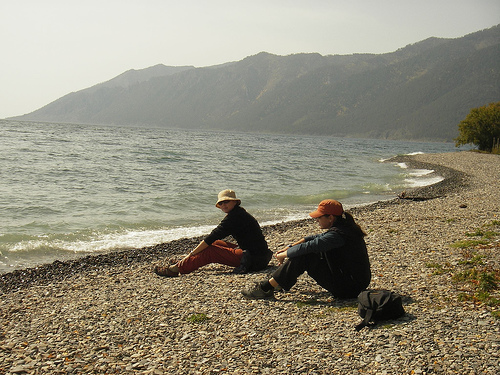
The tiny village of Bolshoe Goloustnoe (pop. 700) is two hours from Irkutsk on the shores of the world's oldest and deepest lake, Lake Baikal. I knew we were going to the right place when, about 45 minutes into the drive, the road turned to dirt and didn't stop until we arrived 1.5 hours later. We were as remote as we could manage in one of the world's remotest places and assured that we were the only Westerners for miles and miles.
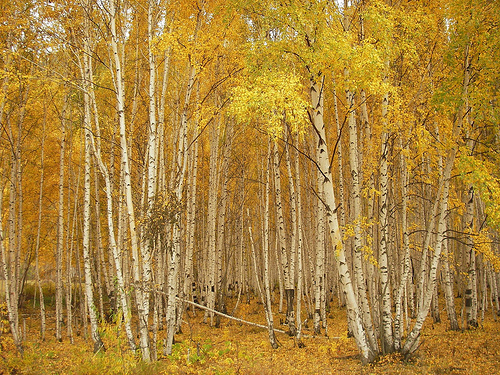
For the first time since visiting small villages in Japan, I felt that we had arrived at a tiny part of the world that exists according to tradition and not the tourist dollar. Bolshoe Goloustnoe is undeniably real and an authentic article of Siberian culture.
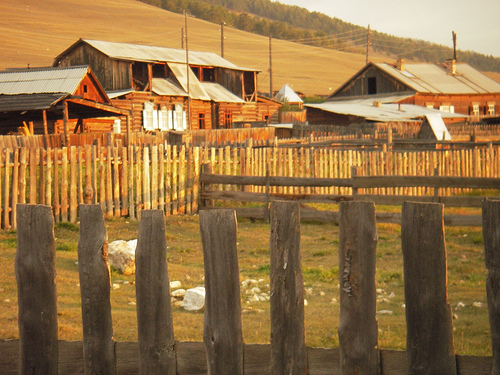
The town on the South Eastern shores of Lake Baikal sits on two main streets surrounded by single story dark-wooden homes with gardens and livestock sharing a slice of property. In fact, the livestock are not bound by fences except the fences to keep them out of personal gardens. As Eleana explained, the cows roam free and return home occasionally for feeding time.
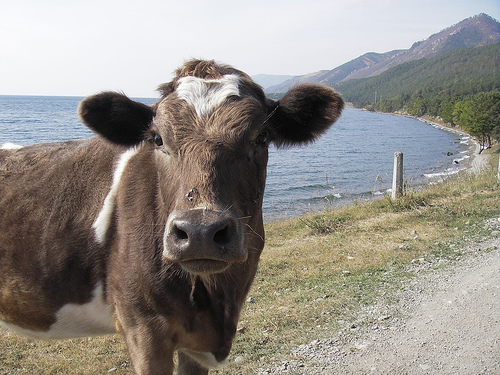
The homes themselves are remarkably similar, with dark wood and ubiquitous, but unique window dressings called Siberian Lace. The Siberians believe in spirits who are able to enter homes through windows and the windows are designed to prevent the spirits from entering. The windows are colorful works of art that beg for photos and appear too good to be true. If they were plucked from this Siberian location and appeared in a city, you could imagine flag-bearing tour groups ooohing and aaahing at the traditional designs. Yet, here they are surrounded by gardens, livestock and splashed mud. These windows are an example of the reality of travel that I long to experience.
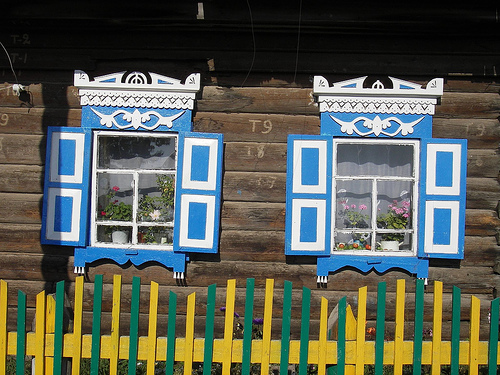
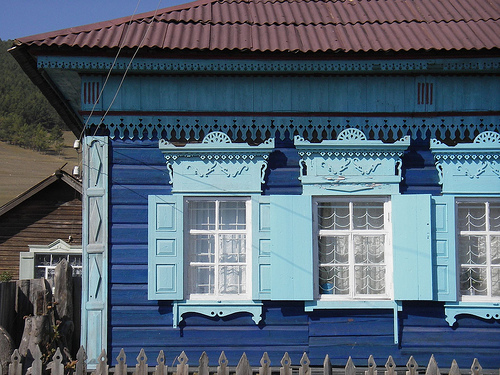
Another Siberian experience is the use of a “banya” or sauna. The tradition works like this… The banya is prepared by building a fire in a furnace-like compartment of a small wooden structure. The fire heats water that is used for bathing and the “sweat room” where you sit naked and relax. I have decidedly mix reactions to the sweat room. I don’t like heat and I already sweated enough for 5 years in Asia, so I didn’t feel the need to sweat, or suffocate for that matter. The thermometer in the sweat room read 85 degrees Celsius, which is 185 degrees Fahrenheit. Is that possible? Could it really be that hot? It seemed that way as the air I inhaled would burn my lips as it entered my mouth. My mind raced a couple of times as I had the fleeting feeling that I wasn’t getting enough air, nearly causing me to rush out of the room. The most enjoyable part of my first banya experience was the exit when the air was luxuriously cool and full in my lungs. To really enjoy a banya, I think you need to have been really cold, as Siberian fisherman surely are.
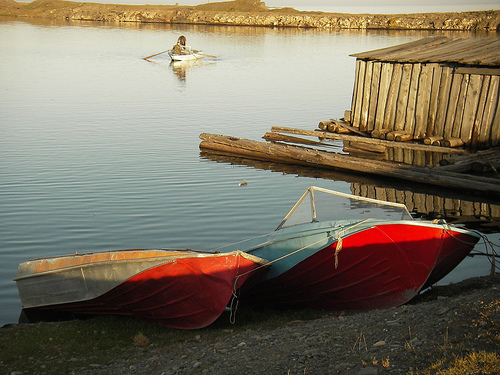
Bolshoe Goloustnoe, more than any other village we’ve visited on the whole trip, seemed to take us back in time. Here are a few examples.
- The toilets are located outdoors and over a deep pit in the earth near the garden. When it fills up, they cover it and dig another hole. Yes, despite pulling fresh, clean water from an aquifer that is associated with the lake, the homes in the village do not have running water.
- Only a few weeks ago mobile phone service arrived in the village. Prior to that, the only phone in the village existed in the Post Office and even it was often in disrepair.
- The village does not have Internet access.
- The villagers are very curious about foreigners, described as a look at someone from another world.
- Few vehicles exist in the village and some of the old-timers have never left the village in their lives.
- Many of the farmers in Bolshoe Goloustnoe are subsistence farmers, growing food to eat rather than sell.
- The village lacks tourist infrastructure – no restaurants or souvenir shops.
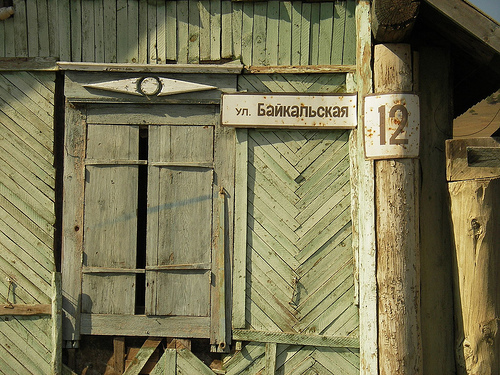
I didn’t realize it until we arrived, but Siberia has a history similar to that of the Western US. Just as the Europeans migrated westward across the US and through Native American land, the Russians moved eastward across Russia and through Buryat land. The Buryats are the indigenous people of Siberia, descended from the Mongols (more info here). Eleana described the Buryats as being nearly completely integrated into the Russian culture or "russified", with their being very little discrimination. We saw evidence of this in the village as nearly every group of people was made up of white and Buryat individuals (see photo below). I asked about the Russian migration and told her about the sad history of the American frontier when Native Americans were exploited and killed for their land. She described the Russian experience much differently with the explorers making friends and working closely with the Buryats. She described the expansion in terms of it being a win-win. Curious, I asked about many of the modern problems of Native Americans such as alcoholism, lack of job opportunities and poverty and it sounded like the Buryats were experiencing the same problems. While I’m sure the eastward expansion in Russia could have been much more friendly that that of the American West, I can’t help but wonder if this story of mutual beneficence is more convenient than it is factual. Perhaps my time in China has taught me that a Communist government has the power to mold historical perspectives into a form that is more easily digested by the people and the international community. Could it be that Eleana’s perspective has been subject to the creativity of government historians of yesteryear? Judging from myriad examples of European expansions into native lands, I somehow doubt the win-win perspective of the story. Maybe I’m just cynical.
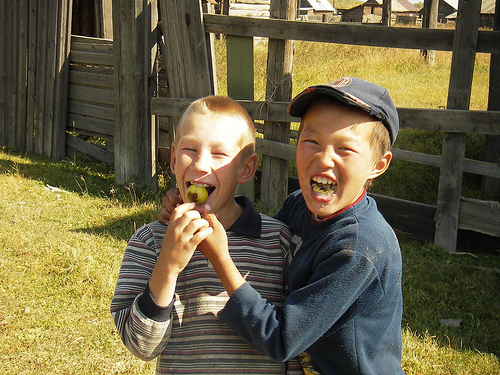
We didn’t expect it, but Bolshoe Goloustnoe and Lake Baikal was one of our favorite places on the trip so far. Like Japan, the village seemed too real, too authentic to be true. It didn’t get any more real than our homestay host, Tamara, mother of 6 and lifelong resident. Could you imagine a more Siberan looking host?
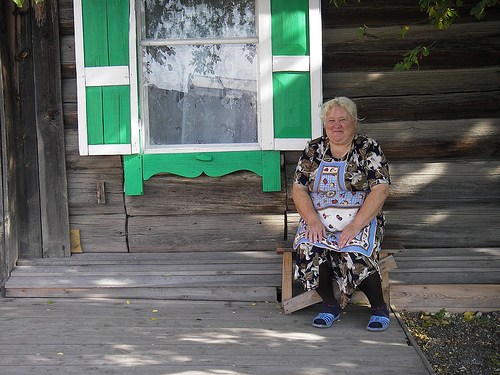














Recent comments
8 weeks 5 days ago
8 weeks 6 days ago
9 weeks 2 days ago
10 weeks 5 days ago
10 weeks 5 days ago
12 weeks 5 days ago
13 weeks 4 days ago
14 weeks 5 days ago
16 weeks 4 days ago
17 weeks 4 days ago